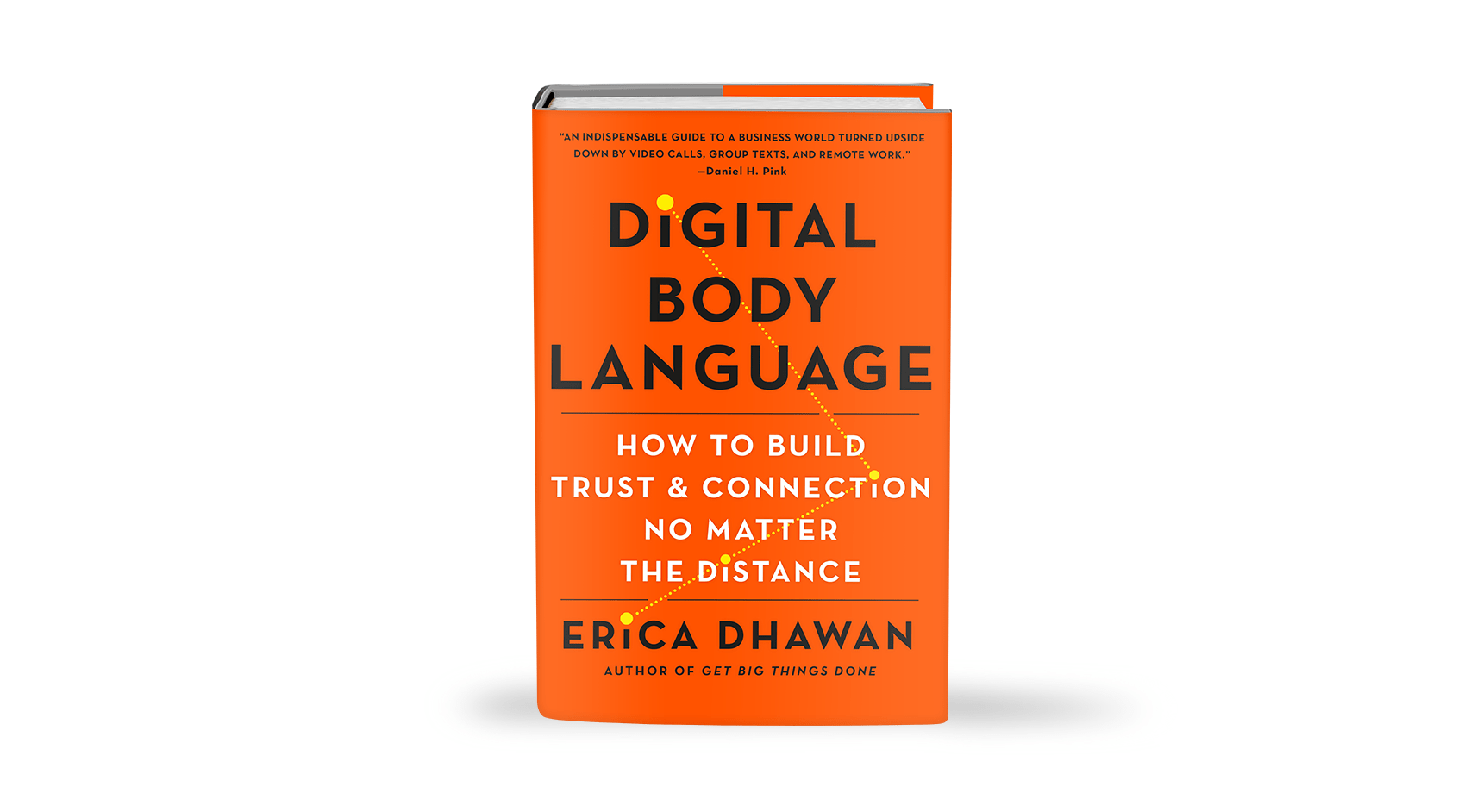Make Better Hires With Improved Remote Interviews
authors are vetted experts in their fields and write on topics in which they are extremely knowledgeable. All of our content is peer reviewed and validated by world-class professionals.

A firm handshake and eye contact have long been considered the signs of a prepared, confident job candidate. But when interviews occur remotely, nonverbal cues are harder to come by. A wave at a camera replaces a handshake, and candidates face a screen, not a human.
Interviewers need to operate like detectives, hunting for “digital body language” signs that candidates are right for the job, according to bestselling author Erica Dhawan, a former Harvard leadership lecturer.
“What we’ve seen in the pandemic is that in a world where there is much less nonverbal language and fewer body cues, there is more stress, anxiety, and misunderstanding,” says Dhawan, author of Digital Body Language: How to Build Trust and Connection, No Matter the Distance, out in May 2021. Understanding digital body language, and generally optimizing interviews for the virtual environment, can help hiring managers find better fits for open roles.

Like remote work, virtual interviewing surged as COVID-19 spread. Fifty-three percent of senior managers hired remote workers during the pandemic, and 75% of those managers conducted remote interviews, a Robert Half survey of more than 2,800 senior managers found. Virtual interviewing is likely to continue even as some workers return to offices. Seventy percent of recruiters and talent professionals expect remote recruiting to become the post-pandemic standard, according to a LinkedIn survey of more than 1,500 talent professionals.
Hiring managers who want to conduct the most effective and insightful remote job interviews can apply Dhawan’s suggestions for processing digital body language and getting the most value from video conversations.
Don’t Overwhelm Candidates
If a prospective hire will be interviewing remotely with multiple people at a company, opt for no more than three employees on a Zoom call with a candidate at a time, Dhawan recommends. As the number of interviewers grows, an individual must work harder to read and decipher each participant’s digital body language. Capping the number of interviewers makes it easier for the candidate to respond appropriately to others’ cues, build connections, and more comfortably showcase their expertise and skills. That all adds up to a more accurate picture of what they can offer as an employee.
Look for Signals of Confidence and Credibility
Assessing the hallmarks of poise and presence is more challenging at a distance. “One of the things we relied on pre-pandemic was nonverbal body language to connect and build trust,” Dhawan says. But there are ways to do this remotely. Candidates who sit up straight, lean slightly into the camera, and use eye contact prove they can establish connection and stay focused on the conversation, key attributes for any hire who will collaborate remotely with colleagues or talk with clients and vendors over videoconference.
Bring Spontaneity and Surprise to the Interview
It’s tempting for interviewers to run through a list of predictable and unexciting screening questions, but for a richer, truer picture of a candidate’s skills and personality, embrace the unexpected. “You might say, ‘Tell me about something in your room or the remote workspace you’re in right now,’” Dhawan says. “That relies on them thinking outside of the box instead of preparing a script on why they want to work at your company.” A job hunter’s response can reveal a lot about their authenticity, creativity, and even sense of humor, as well as how quickly they can pivot in the moment. Their answers can shed light on how they’ll fit in with the existing team, perform in front of executives and clients, and contribute innovatively.
Challenge Candidates to Solve a Problem as a Group
A candidate shouldn’t be only a strong individual contributor, Dhawan says, but also a strong collaborator. Hiring managers can use a group Zoom interview to pose a challenge that participants must solve together. “Give them real case studies on the spot and see how they work. See how inclusive they are, how thoughtful, and how much they collaborate.”
For example, task a team with developing a single slide to pitch a product. “Notice how team members listen to others and not just who talks,” Dhawan says. “See who drafts the slide and who uses tools like chats or whiteboards. Who adds to ideas versus just sharing their own? This can help you identify inclusiveness and listening skills.”
Recognize and Counteract Biases
Because interviewers can’t easily gauge a candidate’s height over a webcam, remote interviews are an ideal vehicle for eliminating the unconscious bias that leads to taller men earning 9% to 15% more than their shorter peers, a bias uncovered by a report published in The Atlantic. But other biases stubbornly persist online, Dhawan cautions. These can include prejudices against candidates with higher pitched voices, foreign accents, or names that sound like they belong to a particular race.
“We may feel more of an instant connection to an Ian if we are American or British or a Raj if we are Indian,” she says. Recognizing a preference for a candidate for reasons unrelated to their skills is a vital step toward fairer evaluations.
Another bias to look out for: favoring candidates vetted in person over remote ones. Building rapport is easier when people are physically together, Dhawan says, so hiring managers should beware of giving an edge to those who interviewed face to face. Plus, remote interviewers might factor in candidates’ home surroundings when assessing them, according to the Society for Human Resource Management (SHRM).
Managers can counter bias toward in-person candidates by asking all candidates the same questions. Allowing for some extra time to become acquainted with a remote candidate can also mitigate that bias, because in a video call, there’s no chatting during the walk from the elevator to the conference room.
Look for a Thank-you Note—but Not a Traditional One
Despite the charm and novelty of a written thank-you note, a few heartfelt lines of appreciation over email is preferable when teams operate remotely. “The new version of the written thank-you letter is an email thank-you that is sent within one hour of the meeting,” Dhawan says. “A quick thank-you email is like the new handshake after an interview. It has a more profound effect than a handwritten letter that will be received days later. It helps [a job seeker] close with a great presence.”
